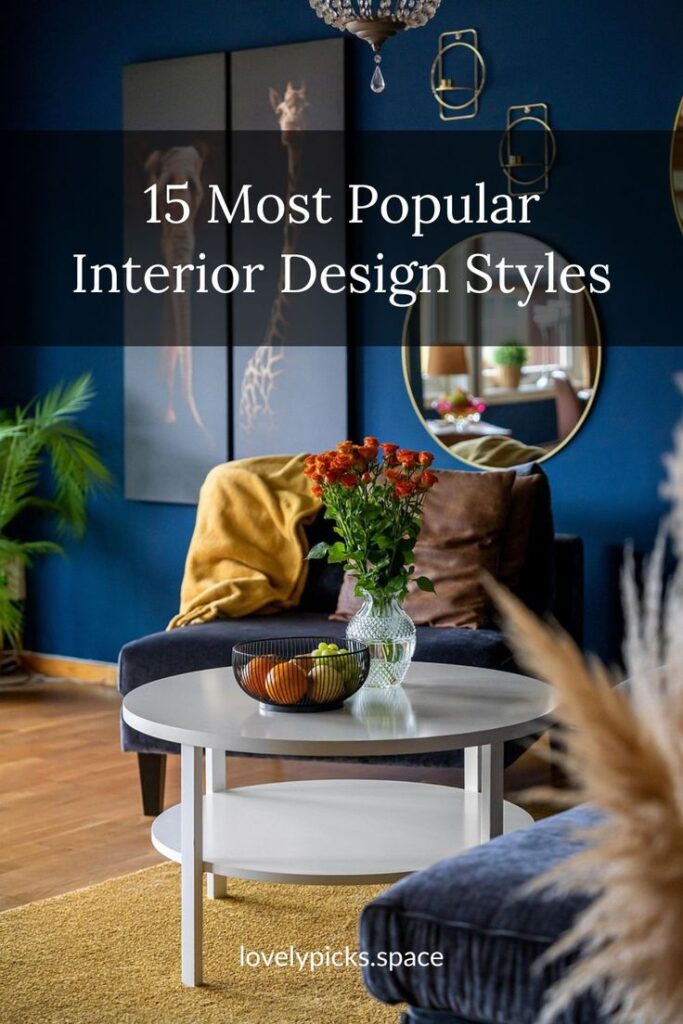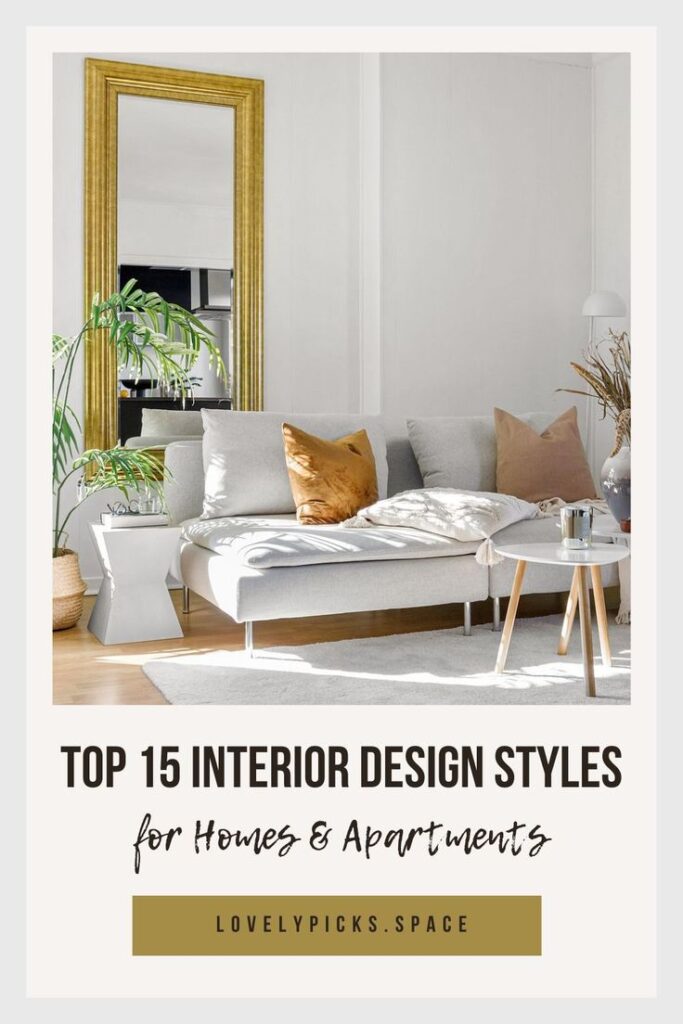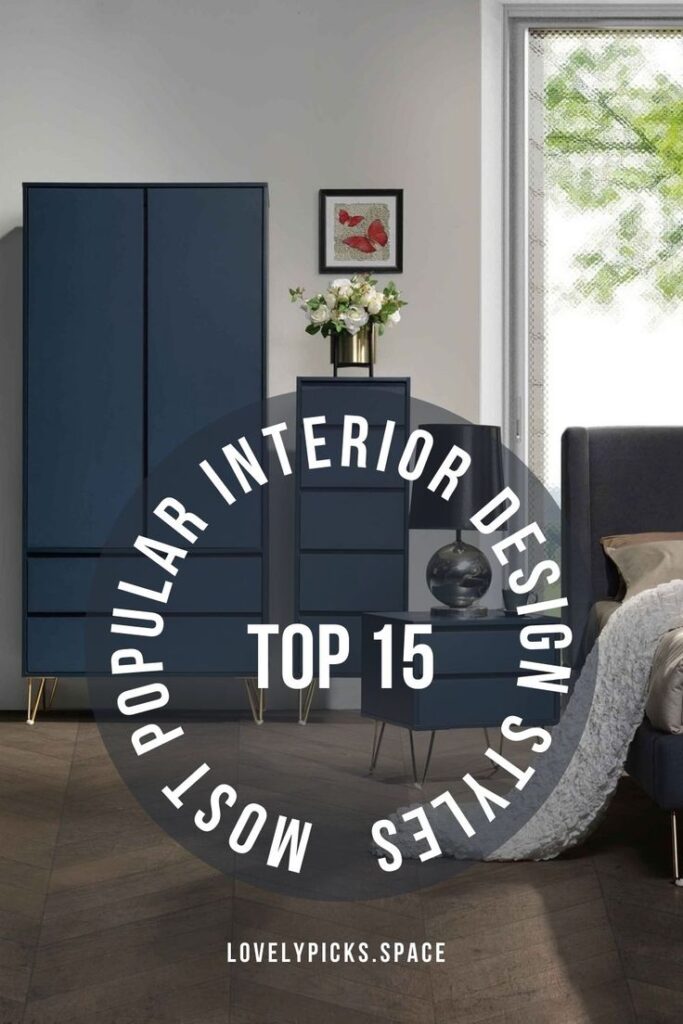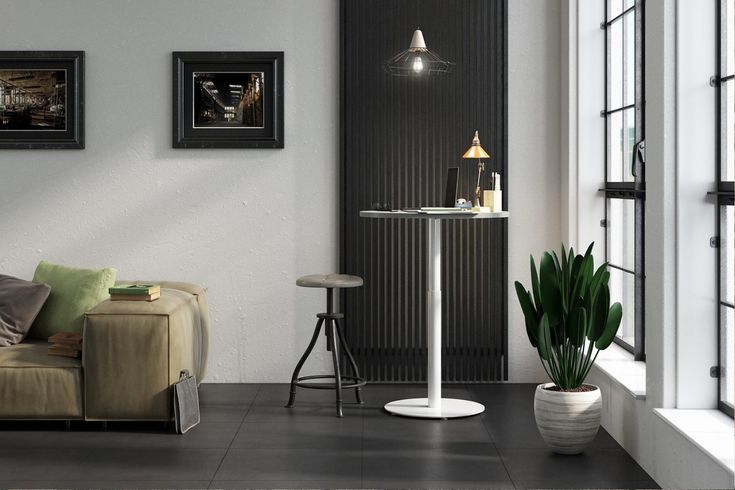15 Most Popular Interior Design Styles for Homes and Apartments
Interior design is more than just decorating a space—it’s about creating a functional, stylish, and comfortable environment that reflects your personality. With so many styles to choose from, it can be overwhelming to decide which one suits your home best. Whether you love sleek modern designs or cozy traditional aesthetics, here are 15 of the most popular interior design styles today.
Table of Contents
Traditional Style Interior Design
Traditional interior design is rooted in European decor from the 18th and 19th centuries, offering a sense of timeless elegance and sophistication. This style embraces symmetry, rich textures, and classic furniture, creating spaces that feel warm and inviting.

Key features include ornate details, such as carved wood furniture, crown moldings, and luxurious fabrics like silk and velvet. The color palette is often rich and warm, with shades of burgundy, gold, and forest green, complemented by neutral tones like beige or cream. Decorative elements include chandeliers, antique pieces, and patterned rugs, which add character and charm to the space.
Traditional design shares similarities with classic and transitional styles but stands out for its emphasis on historical influences and formal aesthetics.
It pairs beautifully with rustic or modern elements, creating a balanced mix of old-world charm and contemporary flair.
Traditional design is perfect for those who appreciate elegance, comfort, and a touch of history in their living spaces.
Transitional Style Interior Design
Transitional interior design is a harmonious mix of traditional and contemporary styles, offering the best of both worlds. This style emerged as a response to the desire for timeless elegance combined with modern simplicity, making it versatile and appealing to many.
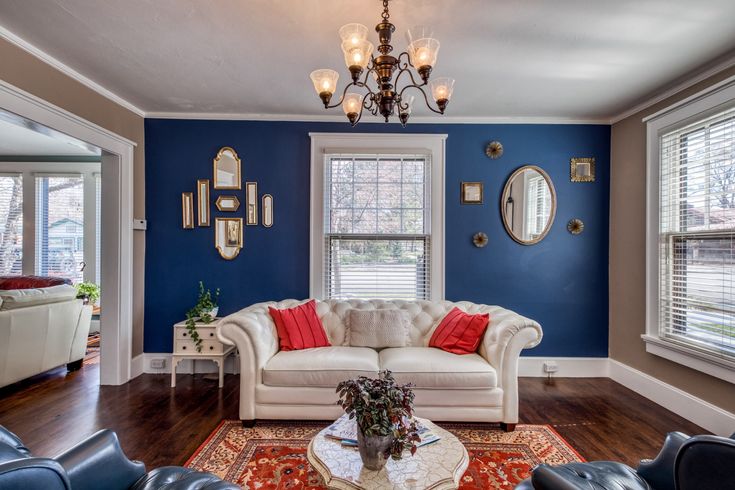
Key features include neutral color palettes—think whites, greys, and beiges—with occasional pops of color for personality. Furniture combines classic shapes with modern materials, creating a balanced look. Decorative elements like statement lighting, textured rugs, and subtle artwork add depth without overwhelming the space.
Transitional design shares similarities with modern and traditional styles but stands out for its ability to blend them seamlessly.
It pairs beautifully with minimalist or Scandinavian aesthetics, and adding rustic or industrial touches can create a unique, personalized vibe.
Transitional design is perfect for creating spaces that feel both elegant and approachable, making it a favorite for modern living.
Modern Interior Design Style
Modern interior design, born in the early 20th century, is all about simplicity and functionality. Inspired by the Bauhaus movement and mid-century modern trends, this style focuses on clean lines, open spaces, and a “less is more” approach.
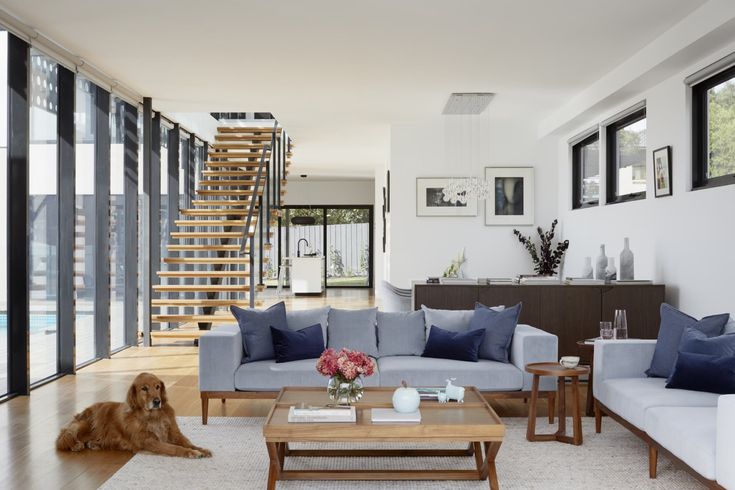
Key features include neutral color palettes—think whites, greys, and earthy tones—with occasional pops of color for contrast. Furniture is sleek and practical, often made from natural materials like wood, leather, and metal. Decorative elements are minimal, with statement pieces like bold artwork or unique lighting taking center stage.
Modern design shares similarities with contemporary style but is rooted in historical movements, making it distinct.
It pairs beautifully with industrial, Scandinavian, or minimalist styles, and can even be combined with bohemian or rustic elements for a personalized touch.
Modern design is perfect for creating a calm, clutter-free environment that feels both stylish and livable.
Modern interior design has evolved into various substyles, each with unique characteristics while maintaining the core principles of simplicity, clean lines, and functionality. Here are some key types of modern interior design:
Industrial Modern Interior Design
Industrial interior design emerged during the late 19th and early 20th centuries, inspired by the transformation of factories and warehouses into living spaces. This style celebrates raw, unfinished elements, creating a unique blend of ruggedness and sophistication.
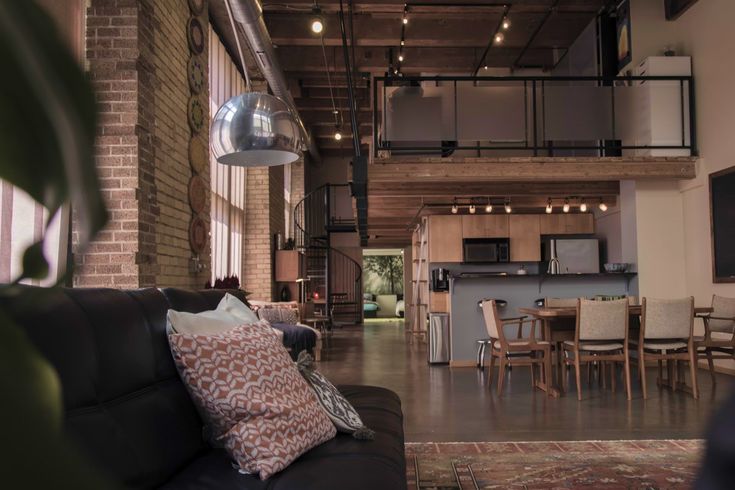
Key features include exposed brick walls, concrete floors, and visible pipes or beams. Furniture is often made from reclaimed wood and metal, adding a rustic yet modern touch. Decorative elements like vintage lighting, oversized clocks, and abstract art enhance the urban vibe.
The color palette typically revolves around neutral tones such as greys, blacks, and browns, with occasional pops of bold colors for contrast.
Industrial design shares similarities with minimalist and modern styles but stands out for its emphasis on raw materials and urban aesthetics.
It pairs beautifully with rustic or Scandinavian styles, and adding bohemian touches can soften its edgy look.
Industrial design is perfect for creating spaces that feel both stylish and authentically urban.
Mid Century Modern Interior Design
Mid-century modern interior design, born in the mid-20th century (1940s–1960s), is celebrated for its clean lines, functionality, and timeless appeal. This style emerged as a response to post-war optimism, blending simplicity with innovative design.

Key features include sleek furniture with tapered legs, organic shapes, and a focus on practicality. Materials like wood, leather, and metal are commonly used, often paired with bold accents.
The color palette combines neutral tones—such as whites, greys, and browns—with pops of vibrant colors like mustard yellow, teal, or orange. Decorative elements are minimal, with abstract art, geometric patterns, and statement lighting enhancing the space.
Mid-century modern design shares similarities with Scandinavian and modern styles but stands out for its retro charm and emphasis on organic forms.
It pairs beautifully with industrial or minimalist aesthetics, and adding bohemian touches can create a cozy, eclectic vibe.
Mid-century modern design is perfect for creating spaces that feel both stylish and functional, with a touch of retro flair.
Contemporary Modern Interior Design
Contemporary interior design is all about staying current and embracing the trends of today. Unlike modern design, which has historical roots, contemporary style evolves with time, making it fresh and adaptable.

Key features of contemporary design include clean lines, open spaces, and a mix of textures. Neutral colors like whites, greys, and beiges dominate, often accented with bold hues for a pop of personality. Furniture is sleek and functional, with an emphasis on comfort. Decorative elements like abstract art, geometric patterns, and statement lighting add character to the space.
This style shares similarities with modern design but is more fluid and less tied to specific eras.
It pairs well with minimalist, industrial, or Scandinavian styles, creating unique combinations. Adding rustic or bohemian touches can also bring warmth and individuality to contemporary interiors.
Contemporary design is perfect for creating spaces that feel fresh, stylish, and welcoming.
Minimalist Modern Interior Design
Minimalist interior design emerged in the mid-20th century, influenced by Japanese Zen philosophy and the Bauhaus movement. This style is all about creating calm, clutter-free spaces that focus on functionality and simplicity.
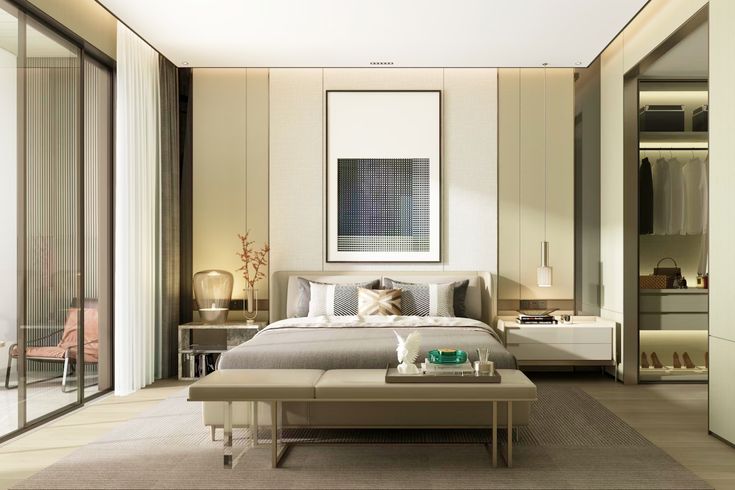
Key features of minimalist design include clean lines, open layouts, and a “less is more” approach. Neutral color palettes dominate—think whites, greys, and beiges—while natural materials like wood, stone, and glass add warmth and texture. Furniture is sleek and practical, with no unnecessary embellishments. Decorative elements are minimal, often limited to a single piece of art or a plant to bring life to the space.
Minimalism shares similarities with modern and Scandinavian styles but stands out for its extreme focus on simplicity.
It pairs beautifully with industrial or contemporary designs, and adding bohemian or rustic touches can create a cozy, personalized vibe.
Minimalist design is perfect for those who value peace, order, and timeless elegance.
Scandinavian Modern Interior Design
Scandinavian interior design, originating in the Nordic countries during the early 20th century, is all about simplicity, functionality, and coziness. It became popular worldwide in the 1950s, thanks to its focus on creating bright, inviting spaces that embrace natural light.
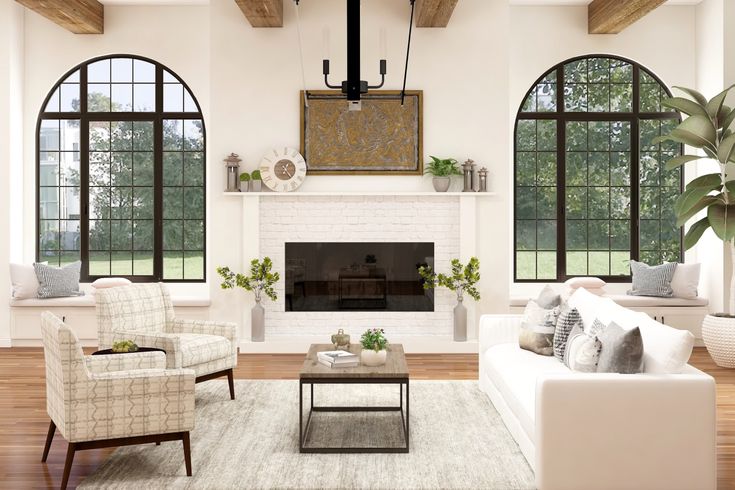
Key features of this style include clean lines, minimal clutter, and a neutral color palette dominated by whites, greys, and soft pastels. Natural materials like wood, wool, and leather are commonly used to add warmth and texture. Decorative elements are subtle, with cozy textiles, simple artwork, and greenery bringing life to the space.
Scandinavian design shares similarities with minimalist and modern styles but stands out for its emphasis on hygge—a Danish concept of coziness and comfort.
It pairs beautifully with industrial or contemporary styles, and adding rustic or bohemian touches can create a more personalized look.
Scandinavian design is perfect for creating a serene, functional, and welcoming space.
Modern Rustic Interior Design
Modern Rustic interior design is a harmonious fusion of contemporary minimalism and rugged, natural charm. This style emerged as a way to create warm and inviting spaces that still feel sleek and updated, perfect for those who love a balance of comfort and elegance.
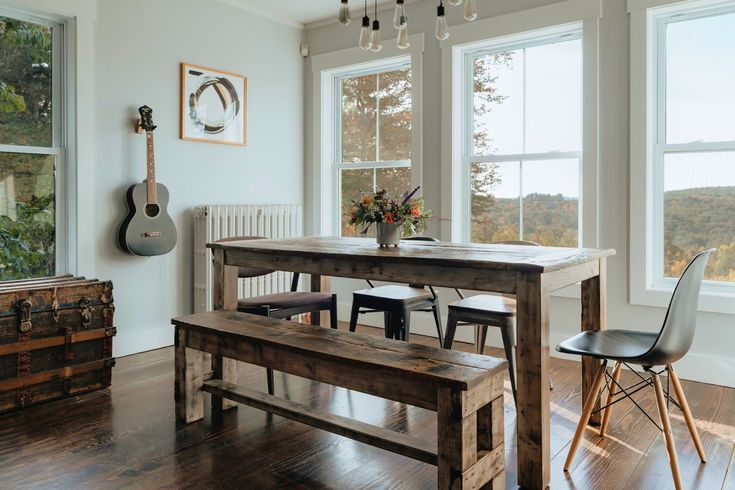
Key features of Modern Rustic design include exposed wood beams, natural stone, and metal accents, blended with clean lines and simple furniture. The color palette is earthy and neutral, featuring tones like beige, grey, white, and warm brown, occasionally accented with soft greens or blacks. Decorative elements often include cozy textiles like wool or fur throws, along with handcrafted pieces and vintage accessories to add personality.
This style is similar to farmhouse and industrial designs but stands out for its mix of rustic warmth and modern simplicity.
It pairs well with Scandinavian or minimalist aesthetics, and adding bohemian or industrial touches can create a unique and personalized look.
Modern Rustic is perfect for those who value the timeless beauty of natural materials combined with a contemporary aesthetic.
Eco Modern Interior Design
Eco-Modern interior design merges sustainability with contemporary aesthetics, creating spaces that are both stylish and environmentally conscious. This style gained traction in recent years as people embraced eco-friendly living without sacrificing modern design principles.

Key features include the use of sustainable and renewable materials such as reclaimed wood, bamboo, recycled metal, and natural textiles like organic cotton or wool. Furniture focuses on clean lines and functionality, often showcasing craftsmanship with minimal waste. The color palette is inspired by nature, with earth tones like beige, green, brown, and soft greys, enhanced by natural light. Decorative elements include plants, handmade items, and energy-efficient lighting to reduce ecological impact.
Eco-Modern design shares similarities with minimalist and Scandinavian styles but stands out for its commitment to environmental responsibility.
It pairs beautifully with industrial or contemporary aesthetics, and adding rustic or Japandi touches can further emphasize its natural elegance.
Eco-Modern design is perfect for those who want to combine contemporary style with eco-conscious living.
These substyles allow modern design to adapt to different tastes and lifestyles, making it a versatile choice for various preferences.
Bohemian (Boho) Style Interior Design
Bohemian, or Boho style interior design is all about embracing creativity, individuality, and a carefree spirit. This style originated in the 19th century, inspired by the unconventional lifestyles of artists, writers, and travelers. It celebrates a mix of cultures, colors, and textures, making every space unique.
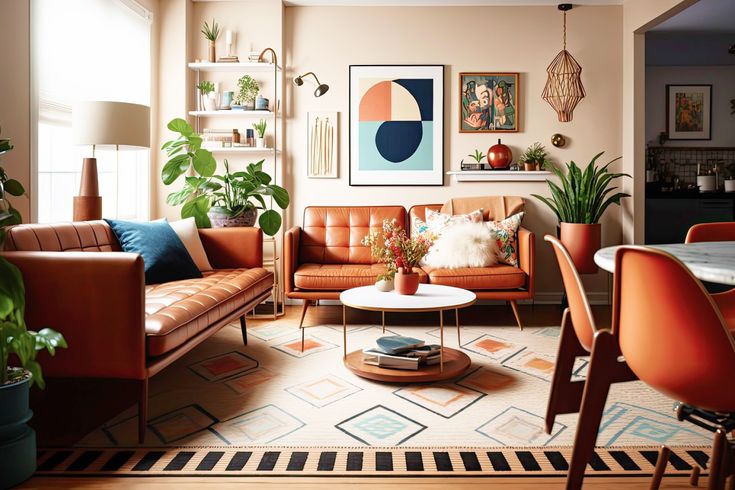
Key features of Boho design include layered textiles, eclectic furniture, and an abundance of plants. Think patterned rugs, macramé wall hangings, and vintage or handmade decor. The color palette is warm and earthy, with shades like terracotta, mustard, and olive green, often accented with jewel tones like turquoise or ruby.
Boho interiors share similarities with eclectic and rustic styles but stand out for their bold use of patterns and textures.
They pair beautifully with Scandinavian or industrial designs, creating a balanced mix of cozy and edgy. Adding minimalist elements can also tone down the vibrant Boho look for a more modern feel.
Boho design is perfect for those who love a relaxed, artistic, and vibrant atmosphere.
Farmhouse Interior Design Style
Farmhouse interior design is inspired by the simplicity and charm of rural homes. This style originated in the countryside, where practicality and comfort were key, and it has since evolved into a popular choice for creating warm and inviting spaces.

Key features of farmhouse design include natural materials like wood, stone, and metal. Exposed beams, shiplap walls, and barn doors are common architectural elements. Furniture is often vintage or distressed, with a focus on functionality. Decorative touches like woven baskets, mason jars, and cozy textiles add character. The color palette is neutral, with whites, creams, and soft greys, often accented with earthy tones like sage green or navy blue.
Farmhouse design shares similarities with rustic and industrial styles but stands out for its cozy, lived-in feel.
It pairs beautifully with modern or Scandinavian elements, creating a balanced mix of old and new. Adding bohemian or eclectic touches can also personalize the space.
Farmhouse design is perfect for those who love a blend of rustic charm and modern comfort.
French Country Interior Design Style
French Country interior design, inspired by the idyllic homes of Provence, France, combines rustic charm with refined elegance. This style originated in the 17th century and reflects the beauty of rural French living.

Key features include antique furniture, weathered wood, and ornate details like carved moldings. Soft, muted colors dominate the palette—think creams, whites, and pastels, often accented with blues and yellows. Natural materials like stone, wood, and linen are staples, while floral patterns and toile fabrics add a touch of sophistication. Decorative elements such as vintage chandeliers, ceramic vases, and wrought iron accents complete the look.
French Country design shares similarities with farmhouse and shabby chic styles but stands out for its balance of rustic and elegant elements.
It pairs beautifully with traditional or eclectic styles, and adding modern touches can create a fresh, updated vibe.
French Country design is perfect for creating spaces that feel cozy, elegant, and effortlessly inviting.
Coastal Interior Design Style
Coastal interior design is inspired by the calming and refreshing vibes of seaside living. This style emerged in coastal regions, blending functionality with a relaxed aesthetic to reflect the beauty of oceanside homes.
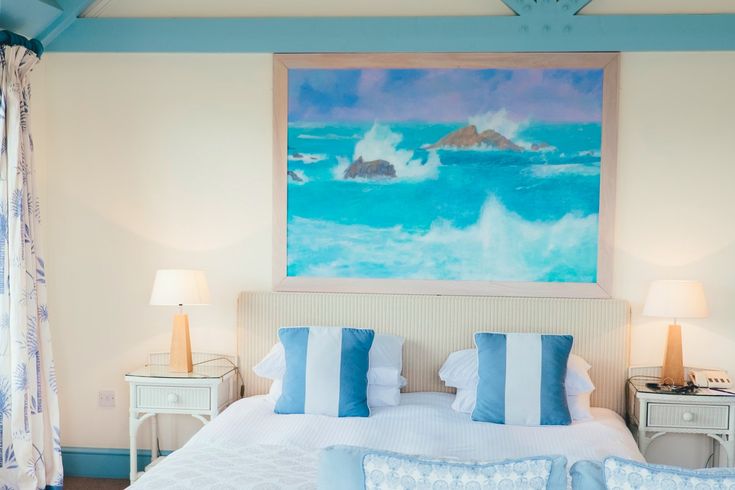
Key features include natural materials like rattan, wicker, and wood, often paired with light and airy fabrics like linen. The color palette revolves around soft neutrals—think whites, beiges, and greys—with shades of blue and green reminiscent of the sea. Large windows, open spaces, and an abundance of natural light define the architecture, while decor elements like seashells, rope details, and nautical artwork bring the coastal theme to life.
Coastal design shares similarities with Mediterranean and farmhouse styles but stands out for its emphasis on a fresh, breezy ambiance.
It pairs beautifully with modern or Scandinavian elements, and adding rustic or bohemian touches can make the space feel even more personal.
Coastal design is ideal for those who love to bring a touch of seaside tranquility into everyday life.
Japandi Style Interior Design
Japandi interior design is a beautiful fusion of Japanese minimalism and Scandinavian functionality. Emerging in the 2010s, this style brings together the calming aesthetics of Japanese Zen principles with the cozy warmth of Nordic design.
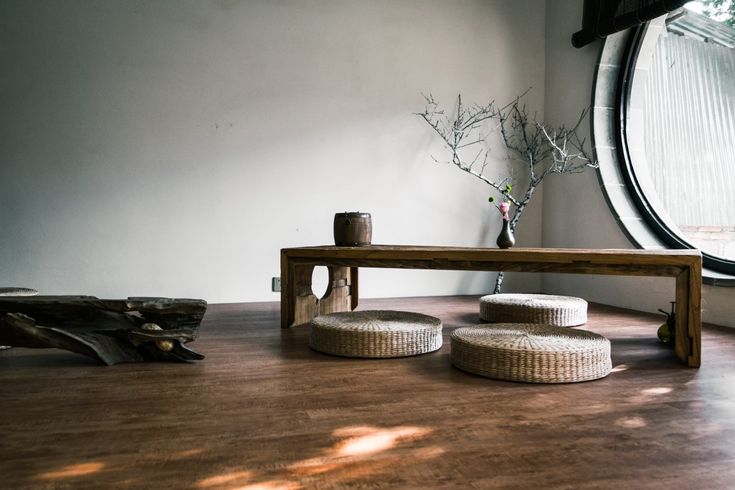
Key features include clean lines, uncluttered spaces, and a strong connection to nature. The color palette is typically neutral and muted, with shades like beige, taupe, grey, and soft pastels. Natural materials such as wood, bamboo, and stone dominate, creating a warm and tranquil atmosphere. Furniture is sleek and simple, emphasizing function over form. Decorative elements like handmade ceramics, textured rugs, and greenery add subtle charm without overwhelming the space.
Japandi shares similarities with minimalist and Scandinavian styles but stands out for its blend of elegance and simplicity.
It pairs beautifully with contemporary or industrial elements, and adding rustic touches can make the space feel even cozier.
Japandi design is perfect for creating a peaceful, functional, and effortlessly stylish living space.
Art Deco Style Interior Design
Art Deco interior design, which gained popularity in the 1920s and 1930s, is a celebration of luxury, glamour, and modernity. This style emerged during the Roaring Twenties, reflecting the optimism and opulence of the era.

Key features of Art Deco include geometric patterns, bold lines, and rich materials like marble, brass, and lacquered wood. Furniture often has sleek, curved shapes, while decorative elements like mirrors, chandeliers, and metallic accents add a touch of sophistication. The color palette is vibrant yet balanced, with jewel tones like emerald green, sapphire blue, and gold paired with neutral shades like black, white, and beige.
Art Deco shares similarities with modern and mid-century styles but stands out for its dramatic flair and intricate details.
It pairs beautifully with contemporary or industrial elements, and adding minimalist touches can tone down its boldness for a more subtle look.
Art Deco design is perfect for those who love a mix of vintage charm and modern sophistication.
Eclectic Style Interior Design
Eclectic interior design is all about creative freedom and personal expression. Emerging in the early 20th century, this style celebrates the art of blending diverse elements into a cohesive and visually interesting space.
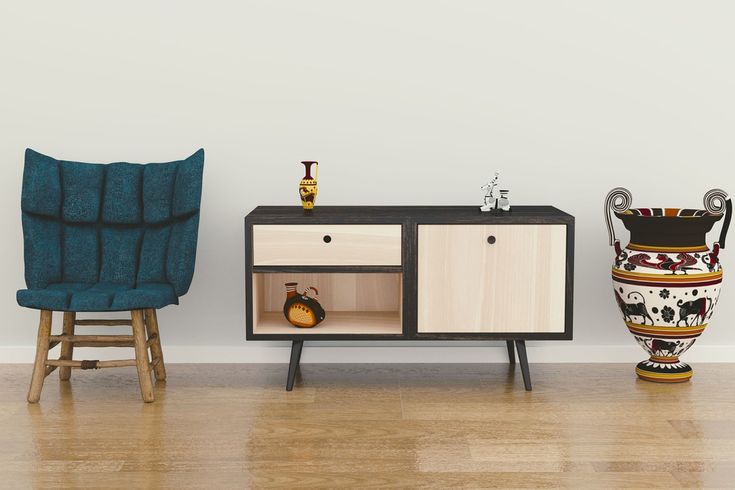
Key features of eclectic design include a mix of textures, patterns, and styles from different eras and cultures. Bold colors often sit alongside neutral tones, creating an intriguing balance. Furniture and decor are curated, with a mix of vintage finds, modern pieces, and artistic accents. Layered textiles, gallery walls, and unique lighting fixtures are also signature elements of this look.
Eclectic design shares similarities with bohemian and industrial styles but stands out for its deliberate curation and focus on harmony despite its diversity.
It pairs effortlessly with minimalist, traditional, or rustic elements, allowing for endless creativity and personalization.
Eclectic interiors are perfect for those who love to mix and match, turning their homes into one-of-a-kind masterpieces.
🪄 Final Thoughts
Choosing the right interior design style is like finding the perfect outfit—it should reflect your taste, lifestyle, and make you feel completely at home. Whether you’re drawn to the clean lines of Modern Style, the nostalgic charm of Mid-Century Modern, or the warm and inviting vibes of Farmhouse Chic, there’s a style out there with your name on it.
The best part? You don’t have to stick to just one! Mix and match, layer textures, experiment with color palettes, and most importantly—have fun with it. Interior design isn’t just about trends; it’s about creating a space that tells your story.
Still not sure which style fits you best? Try mood-boarding your favorites or take inspiration from Pinterest and Instagram. Your dream space might be just a pin away!
You may also like to check out other articles in the category: Home Decor
